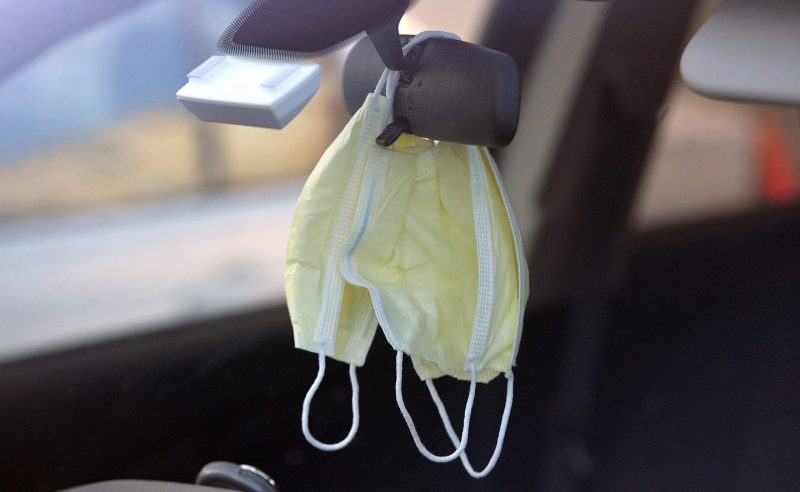
For most of south central Pennsylvania – including Harrisburg, Carlisle and Lancaster – it looks like we’re staying in the red zone.
Charles Thompson/PennLive
(Harrisburg) — Gov. Tom Wolf has said that he will be ready to identify a second group of Pennsylvania counties for the first step of a staged economic reopening and partial relief from statewide stay-at-home orders Friday, positioning them to join the 24 counties that officially made the move to Wolf’s “yellow” stage earlier today.
The decision has consequences since, in a separate action Thursday, Wolf extended his coronavirus stay-at-home ordersfor the rest of the state until June 4.
So PennLive, ever looking forward, took a fresh look at new case incidence rates – the most publicly-discernible of the Wolf Administration’s metrics – through Wednesday May 6 and here’s the hard truth: For most of us in south central Pennsylvania – including Harrisburg, Carlisle and Lancaster – it looks like we’re staying in the red zone.
Administration officials have stressed that the case threshold is not the only thing in this decision. It also depends on proximity to outbreak areas, the capacity of hospitals and health systems in the area, and other factors.
But taking the case data as a start, the prognosis looks much better for southwestern Pennsylvania, the Laurel Highlands and some other counties just west and north of the Capital Region.
If the governor is taking an aggressive approach, he might also consider Perry and York counties in South Central Pennsylvania, which have dipped below the new case-threshold for the last two weeks. Perry, in fact, has consistently been below the threshold since it was established last month.
But to handicap it, it appears that the most of the state Department of Health’s southwest region: Allegheny, Armstrong, Butler, Cambria, Fayette, Greene, Indiana, Somerset, Washington and Westmoreland counties; and Blair, Bedford and Fulton counties just to the east of them are the best candidates to start reopening.
All 13 of those counties not only have new case rates over the last two weeks that fall below the 50-new-cases-per-100,000-resident threshold that the administration has set as one of its guideposts; several of them also have case rates that are lower than some of the counties that were included in Wolf’s first wave last week.
For much of this southwest quadrant of the state, the pandemic has really been someone else’s story.
Allegheny, home to Pennsylvania’s second-largest city in Pittsburgh, has never seen a big surge of COVID-19 cases,according to health officials there, and – as the geographic hub of the region – it is well-positioned to meet a rise in cases should that happen.
This would leave Beaver County as the sole outlier in western Pennsylvania, which has seen its case incidence rate dramatically inflated by a severe COVID-19 outbreak at Brighton Rehabilitation and Wellness Center in Brighton Township, where more than 300 residents are said to have tested positive for coronavirus.
But Wolf and state Health Secretary Dr. Rachel Levine have consistently said they will not carve out self-contained locations like nursing homes or prisons from a county’s overall case totals because of the movement of staff and contractors in and out of such facilities.
Wolf’s decision seems to be harder for four other counties that meet the new case incidence threshold as of Thursday: Perry (23.8) and York (43.2) counties in south central Pennsylvania, and Susquehanna and Wyoming counties in the northeast.
The problem for both Perry and York is that again, as of Thursday, they are both surrounded by counties that, while close, haven’t yet met the 50-case threshold on a consistent basis. In his first reopening announcement last week, Wolf refrained from lifting stay-at-home orders in counties that would have become reopening islands.
The issue for Susquehanna (34.7) and Wyoming (37.3) counties in the northeast, meanwhile, is that they abut counties like Lackawanna, Luzerne and Monroe counties that have seen some of the highest per capita rates of infection in the state through the pandemic.
Three other counties, Carbon (53.0), Mifflin (52.0) and Wayne (50.6), just popped back over the 50-case threshold on Thursday, so they too appear to be on the bubble.
Even if Wolf yellow lights just the first 13 counties mentioned here, that will be a significant stride for the state as a whole.
Where the first 24 counties combined for just 11.9 percent of Pennsylvania’s population, the 13 southwestern and Laurel Highland counties alone would add another 2.7 million residents to the yellow zone. When their entry was official – likely sometime next week – that would leave 4.2 million Pennsylvanians, or 32.7 percent of the total population, in the early stage of the reopening.
It’s also worth repeating, yellow is just a necessary first step on the journey to a new normal; it is far from the destination. A much broader reopening that could include things like a resumption of organized sports, public concerts and church services will occur when a county or region moves to green.
The pandemic, to this point, has sickened 52,915 Pennsylvanians, and it is being blamed for 3,416 deaths.
The Wolf administration, to this point, has not disclosed any hard, case incidence markers for what it will take for an area to go green. The governor and Levine have both said that will also require demonstrated capabilities in coronavirus testing, contact tracing, and safe quarantining of those exposed to infected persons.